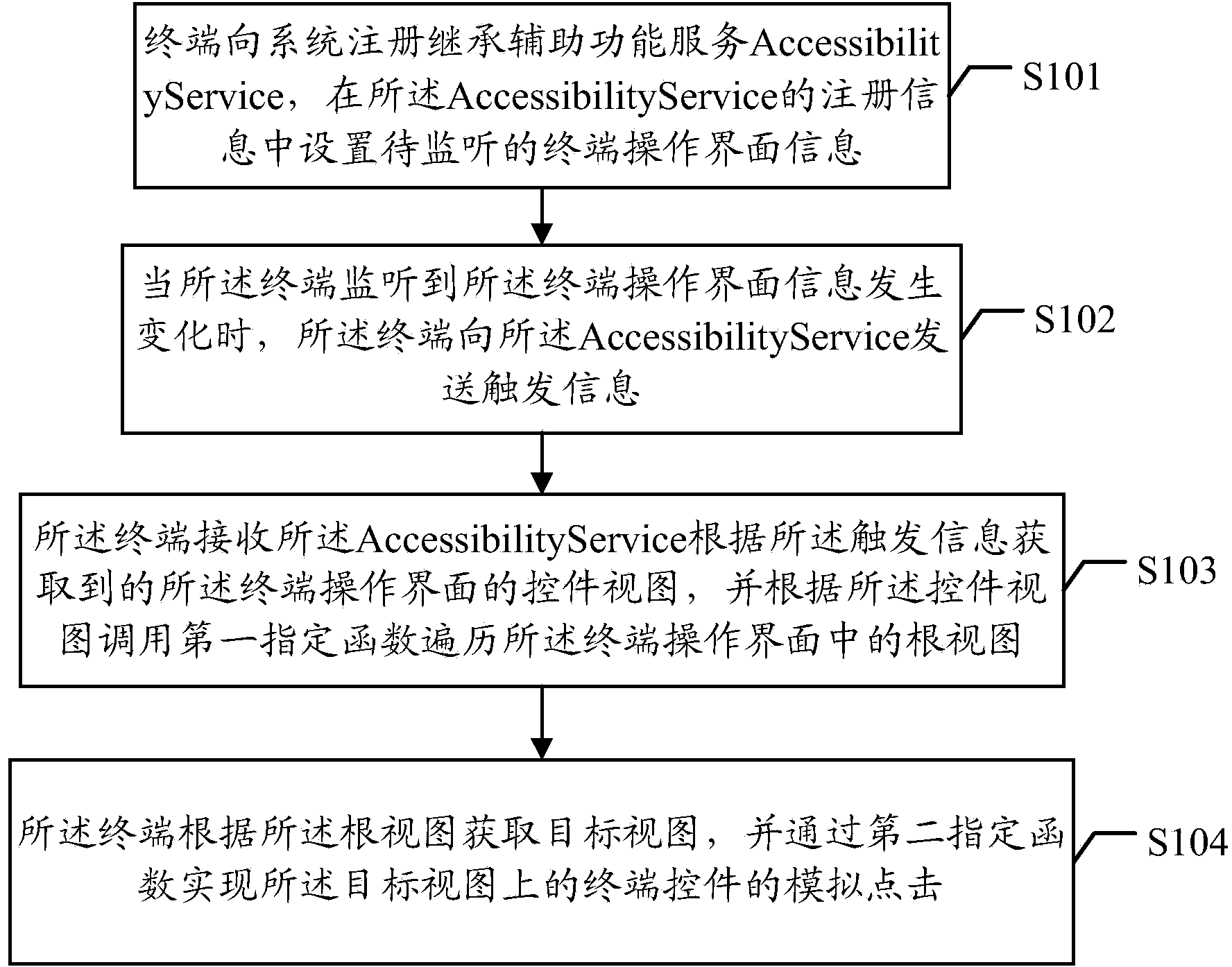Method and device for simulating click on terminal control
A technology for simulating clicks and terminals, applied in the electronic field, can solve the problems of increasing the implementation cost of simulating button clicks, high difficulty in implementation, poor adaptability, etc., and achieve the effects of improving user experience, low implementation cost, and high adaptability
- Summary
- Abstract
- Description
- Claims
- Application Information
AI Technical Summary
Problems solved by technology
Method used
Image
Examples
Embodiment Construction
[0068] The following will clearly and completely describe the technical solutions in the embodiments of the present invention with reference to the accompanying drawings in the embodiments of the present invention. Obviously, the described embodiments are only some, not all, embodiments of the present invention. Based on the embodiments of the present invention, all other embodiments obtained by persons of ordinary skill in the art without creative efforts fall within the protection scope of the present invention.
[0069] In a specific implementation, the terminals described in the embodiments of the present invention may include: mobile phones, tablet computers, notebook computers, walkmans, etc. The above-mentioned terminals are only examples, not exhaustive, including but not limited to the above-mentioned terminals. The following will take a mobile phone as an example to describe in detail the method and device for simulating clicking on a terminal control provided in the ...
PUM
 Login to View More
Login to View More Abstract
Description
Claims
Application Information
 Login to View More
Login to View More - R&D
- Intellectual Property
- Life Sciences
- Materials
- Tech Scout
- Unparalleled Data Quality
- Higher Quality Content
- 60% Fewer Hallucinations
Browse by: Latest US Patents, China's latest patents, Technical Efficacy Thesaurus, Application Domain, Technology Topic, Popular Technical Reports.
© 2025 PatSnap. All rights reserved.Legal|Privacy policy|Modern Slavery Act Transparency Statement|Sitemap|About US| Contact US: help@patsnap.com



